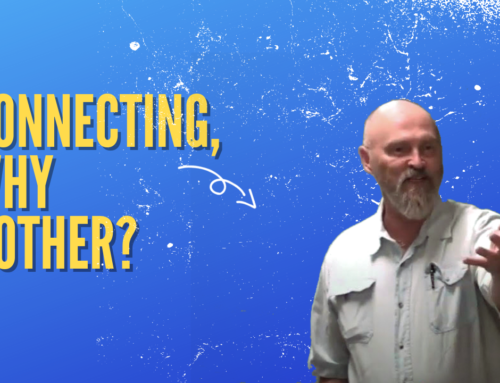This is the scariest part of discovering the truth about ourselves. If you haven’t got to read the first two posts or listen to the sermon online – try it – I guarantee you will get a few laughs. This is the last installment before I move onto another topic – hopefully a bit lighter – but Who knows?
- Truth threatens our Pride
The sin nature which Paul refers to is essentially the sin of pride [the exaltation of the self]. Pride has a vested interest in minimizing sin. Given the presence of the new God-centred nature within us Pride knows that it is no longer in total control. It cannot simply run the new nature out of town. God’s spirit within us and the new mind of Christ cannot be ousted by the power of pride. Fortunately pride is not that strong but, just like with Adam and Eve in the garden, pride can gain advantages through deception and lies. Pride can protect much sin simply by minimizing it. “Yes, it is sin but it is a very small one.” “Yes, it is sin but you are working on it.” “Yes, it is sin but it could be much worse.” THE POWER OF PRIDE MUST NEVER BE UNDERESTIMATED!
- Grading ourselves on the curve.
One of pride’s best weapons is convincing us that God “grades on the curve”. Imagine a curve shaped like a bell rising up from a baseline. It rises from the left very slowly at first. Then it rises very quickly up to the top of the bell. It reaches a round peak and then it drops quickly again to end with another very shallow short portion at the right end of the curve line.
It works like this; in any group of students there will always be a few geniuses who get top marks. Statistically this group is usually very small so let’s say they are the top 5-10%. These guys are the Nerds that everyone laughs at who later own software companies and fly their super-model wives around in jets. They are under the short almost flat part of the curve on the far right hand side of the bell.
Then there is the group of generally good students, they are the next largest group, let’s say they are the next 35-40% of the class. They are under the curve line to the left of the Nerds. They occupy the biggest portion under the curve line to the right of the centre of the bell. These are the guys who apologized to the Nerds for how they treated them in high school and now work for the Nerds at good paying jobs.
Now we have 50% left to deal with. This large group sits under the bell curve to the left of the last group. They are basically the left hand mirror image of the achievers and nerds. Of this 50% there is a fairly large group that could do better but life has dealt them a bum deal. They are educationally underprivileged; their home life sees to it that they are surrounded by distractions so they rarely get their homework done. They are basically good students who need a leg up. In order to save them from crippling shame it is decided that a further group [let’s say, 30%] will receive a failing mark but one which can be remedied by attending summer school.
Now we have 20% left with a serious problem. Some of these students will just have to fail the test but at least 15% will be able to take the class next year and hopefully we will be able to find a way to pass them. This is best accomplished by creating a new class of student and designing special tests just for them. The curve is then applied to them as a group with the amazing result that all but one pass! They all receive their high school diploma and enter the work force. At this point the educators’ job is done and the reality of the work force can sort out who really passed and who really failed.
I know what you are going to ask; “What about the fate of the one guy who really and truly failed no matter what educational gymnastics were performed?” Simple really; he was the good looking jock who got by on the strength of his looks and his high school football record. He is now a successful politician. I like that line! I laughed when I wrote that!
So, here is my point. When you grade on the curve it really doesn’t matter in any absolute sense how you performed on the test. You are simply being compared to the rest of the group. You are safe as long as your performance is average. And this is exactly how our pride wants us to view sin. It argues that there really are no absolute pass/fail standards. It wants us to see ourselves as somewhere in the middle of the curve because when we compare our sin to the sins of those on our left we are fine – we pass. Of course, the beauty of the curve is that there is almost always someone to our left. The only real problem comes for the last guy on the left. Fortunately for our pride, history has provided us with some very far left guys to compare ourselves to. Hitler, Stalin, and any number of Third World dictators come to mind.
Using the curve results in sin becoming very relative and not really much of a problem. Pride protects our sin by lying to us about the true nature of sin and by arguing that God grades on the curve so we should too.
Here are some questions if you want to raze your friends this week:
- Give an example of a pleasurable sin that you rationalize so you could continue doing it. What is the lie you are believing that allows the sin to remain?
- Give an example of unpleasant change that you had to make because of seeing the truth. What was the lie you were believing before you saw the truth [that allowed the problem to remain]?
- Give an example of truth resulting in increased responsibility in your life. What was the lie that allowed the irresponsibility to remain?
- Why is facing our sin painful? What part of us does it hurt? Example?
- Why does truth threaten our pride?
- Have you been grading yourself [assessing your sin] on the curve? Have you been viewing others “on the curve”?







Great article & great questions! Fortunately I’ve been facing the truth about Sin in my life in recent months.
Phew!!
Anita,
I love the fact that you use the word “fortunately” when you admit facing your sin. Growth always involves some form of discomfort. In this case the discomfort brings peace. Thanks for keeping in touch.
The discomfort of coming to terms with God’s just nature and my sinful nature often results in me coming to realize the extent of my personal pride.